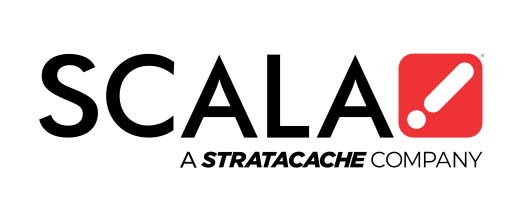There are many different options for businesses to choose from when it comes to digital signage media players, but which is best? It is important to think about key factors like reliability, complexity, form factor and affordability in answering this question.

What is a digital signage media player?
In relation to digital signage, in its most simple form a media player (or digital signage player) is a device that connects to a display (for example, a screen or networks of screens) and computer. It receives and processes media files like images and videos and displays them on the screen. Such devices can range from HDMI sticks and small Android devices to powerful, purpose-built Windows or Linux-based media players, and everything in between.
How does a media player affect digital signage delivery?
For a digital signage media player to be effective and fit-for-purpose it must be:
- reliable
- robust and durable
- compatible with the right software
- appropriate for the complexity and size of the digital signage network
Reliability
At the very least, you must be able to rely on your digital signage media player to deliver your content reliably and seamlessly. You want to select a player that will result in no downtime, will quickly and seamlessly update your digital signage content as required and will have no trouble processing large media files and interactive content. For small, simple setups a lower-grade player may suffice. For most enterprise-level needs, a commercial-grade media player designed specifically to deliver more complex digital signage content is your best bet. Low-budget consumer-level devices and even some mid-range devices could result in interruptions to your content and other issues if pushed beyond their limits, resulting in a less than ideal customer experience.
Durability
Most consumer-level media player devices are not designed for round-the-clock use. For enterprise digital signage, robust and durable hardware is essential. The right enterprise-level media player will be made of durable material able to withstand extensive use, as well as include features to protect against dust, moisture and other pollutants. They are also usually equipped with higher processing power and are capable of handling more complex content.
Software compatibility
Software is a critical component of a digital signage setup, and businesses spend a long time choosing the right digital signage software for their business needs. It is therefore equally important to choose hardware that is compatible with the chosen software. Lower-end digital signage media players that run on certain types of operating systems (e.g. Android) may not be compatible with all types of software, whereas enterprise-level, commercial media players are more likely to have support for a wide range of software applications.
Complexity and size of network
This is perhaps the most important factor when considering a digital signage media player. While a small business with a single screen may be able to get away with a lower-grade media player, any medium to large business with multiple sites and/or many networked screens must choose a media player that supports the complexity and size of the network. A robust, enterprise-level media player is needed for applications of any reasonable size or complexity.
Additional factors
There are some other things businesses may consider when choosing the right digital signage media player, including:
- Hardware specifications and processing power
Complex, high definition and interactive content and high-quality media files will require good processing power to display optimally. - Support for varied content formats
This includes interactive content and complex multimedia files. - Multi-screen support
Most digital signage networks feature more than one screen, so multiple outputs are an essential component of the media player. - HD and 4K support
Most businesses today require a system that can support high-definition and ultra high-definition content for optimum display, as well as 4K content. - Form factor
For many businesses, the ability to obscure the player from view is essential for aesthetic reasons. A media player with a slim, unobtrusive form factor that can be easily mounted helps retain a sleek look. - Affordability
Budget plays a role in any digital signage setup. It is critical, however, not to sacrifice things like reliability, durability and essential features just to save money as it can cost more down the line if the hardware has to be replaced.
Scala Media Players: Robust and Reliable for Any Digital Signage Application
With over 30 years of expertise, Scala is an industry leader in digital signage solutions for many varied industries, from retail and hospitality to healthcare, education, transportation and entertainment. Our diverse range of digital signage media players caters to businesses of all sizes, from start-ups to large, complex businesses with enterprise-level needs.
Discover Scala’s robust line of digital signage media players: https://scalaapac.wpengine.com/products/hardware/media-players/
Andrew Veenendaal is the AVP Technology & Innovation – APAC at STRATACACHE Asia-Pacific and is responsible for the end-to-end development, planning, solution design, execution, and implementation of various strategic and operational activities in Asia-Pacific. He also provides direction and support for digital signage solutions that drive business growth and streamline operations.


